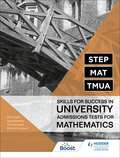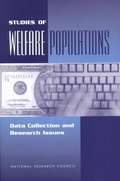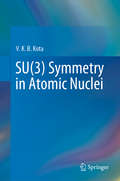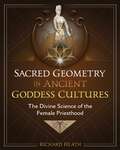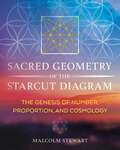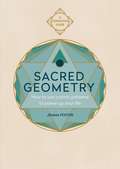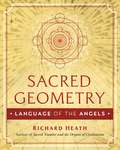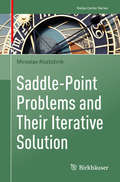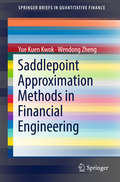- Table View
- List View
STEMscopes™ Alabama Math, Student Notebook, First Grade
by Accelerate LearningNIMAC-sourced textbook
STEMscopes™ Alabama Math, Student Notebook, Fourth Grade, Volume 1
by Accelerate LearningNIMAC-sourced textbook
STEMscopes™ Alabama Math, Student Notebook, Fourth Grade, Volume 2
by Accelerate LearningNIMAC-sourced textbook
STEMscopes™ Alabama Math, Student Notebook, Kindergarten
by Accelerate LearningNIMAC-sourced textbook
STEMscopes™ Alabama Math, Student Notebook, Second Grade
by Inc. Accelerate LearningNIMAC-sourced textbook
STEMscopes™ Alabama Math, Student Notebook, Third Grade, Volume 1
by Accelerate LearningNIMAC-sourced textbook
STEMscopes™ Alabama Math, Student Notebook, Third Grade, Volume 2
by Inc. Accelerate LearningNIMAC-sourced textbook
STEMscopes™ Alabama Math: Assessment Workbook, Fifth Grade
by Accelerate LearningNIMAC-sourced textbook
STEMscopes™ Alabama Math: Student Notebook, Fifth Grade, Volume 2
by Accelerate LearningNIMAC-sourced textbook
STEP, MAT, TMUA: Skills for success in University Admissions Tests for Mathematics
by David Bedford Richard Lissaman Tim Honeywill Phil ChaffeStand out, showcase your ability and succeed in your university admissions test. Whether you're taking STEP, MAT or TMUA, this essential guide reveals tried-and-tested strategies for building the problem-solving skills you need to secure a high score.Containing expert advice and worked examples, followed by multiple-choice and extended questions that replicate the exams, this guide is designed to improve your understanding of the admissions tests and help to build the skills universities are looking for.- Learn to think like a university student - detailed guidance, thought-provoking questions and worked solutions show you how to advance your mathematical thinking- Improve your mathematical reasoning - practise the problem-solving skills you need with 'Try it out' activities throughout the book and end-of-chapter exercises to track progress- Build a path through every problem - our authors guide you through each type of problem so that you can approach questions confidently, think on the spot and apply your knowledge to new contexts- Maximise marks and make the most of the time you have - at the end of each chapter, our authors give advice on how to tackle questions in the most time-efficient way and help you to figure out which ones will show off your abilityWhat are the STEP (Sixth Term Examination Paper), MAT (Mathematics Admissions Test) and TMUA (Test of Mathematics for University Admission) admissions tests?These admissions tests are used by universities as part of the application process to test problem-solving skills and identify candidates with the highest ability, motivation and ingenuity.MEI (Mathematics in Education and Industry) endorses this book and provided two of the authors. MEI is a charity and works to improve maths education, offering a range of support for teachers, including expertly written resources.OUR AUTHORSDavid Bedford has a PhD in Combinatorics and has been a mathematics lecturer in UK universities for over 30 years. He is also an A level examiner and has extensive experience in preparing students for mathematics admissions tests. David is the author of the Hodder 'MEI Further Mathematics: Extra Pure Maths' textbook.Phil Chaffé is the Advanced Maths Support Programme 16-19 Student Support and Problem Solving Professional Development Lead. He is the creator and lead writer for the Problem Solving Matters course which is designed to prepare students for mathematics admissions tests and is run in partnership with the Universities of Oxford, Warwick, Durham, Manchester, Bristol and Imperial College London. He is also the course designer for Imperial College's A* in A Level Mathematics course. He is also the MEI University Sector Lead.Tim Honeywill has been teaching at King Henry VIII School, Coventry, since 2008. Before that, he was the Coventry and Warwickshire Centre Manager for the Further Mathematics Network (now the AMSP), based at the University of Warwick where he did his PhD. He leads a ten-week Problem Solving course for Year 12 students and is a presenter on both the Problem Solving Matters course and on a STEP support course for Year 13 students.Richard Lissaman has a PhD in Ring Theory, a branch of abstract algebra. He has over 10 years' experience as a mathematics lecturer in UK universities and 20 years' experience of supporting students with A level Mathematics, Further Mathematics and mathematics admissions tests.
STUDIES OF WELFARE POPULATIONS: Data Collection and Research Issues
by Panel On Data Methods for Measuring the Effects of Changes in Social Welfare ProgramsThis volume, a companion to Evaluating Welfare Reform in an Era of Transition, is a collection of papers on data collection issues for welfare and low-income populations. The papers on survey issues cover methods for designing surveys taking into account nonresponse in advance, obtaining high response rates in telephone surveys, obtaining high response rates in in-person surveys, the effects of incentive payments, methods for adjusting for missing data in surveys of low-income populations, and measurement error issues in surveys, with a special focus on recall error. The papers on administrative data cover the issues of matching and cleaning, access and confidentiality, problems in measuring employment and income, and the availability of data on children. The papers on welfare leavers and welfare dynamics cover a comparison of existing welfare leaver studies, data from the state of Wisconsin on welfare leavers, and data from the National Longitudinal Survey of Youth used to construct measures of heterogeneity in the welfare population based on the recipient's own welfare experience. A final paper discusses qualitative data.
SU(3) Symmetry in Atomic Nuclei
by V. K. KotaThis book provides an understandable review of SU(3) representations, SU(3) Wigner–Racah algebra and the SU(3) ⊃ SO(3) integrity basis operators, which are often considered to be difficult and are avoided by most nuclear physicists. Explaining group algebras that apply to specific physical systems and discussing their physical applications, the book is a useful resource for researchers in nuclear physics. At the same time it helps experimentalists to interpret data on rotational nuclei by using SU(3) symmetry that appears in a variety of nuclear models, such as the shell model, pseudo-SU(3) model, proxy-SU(3) model, symplectic Sp(6, R) model, various interacting boson models, various interacting boson–fermion models, and cluster models. In addition to presenting the results from all these models, the book also describes a variety of statistical results that follow from the SU(3) symmetry.
Sachrechnen mit digitalen Medien im Förderschwerpunkt Lernen: Konzeption und Erprobung einer Tablet App zum Verstehen von Textaufgaben
by Christina BierbrauerDas Bearbeiten mathematischer Textaufgaben ist ein anspruchsvoller Prozess, der insbesondere für Schülerinnen und Schüler mit Förderbedarf Lernen herausfordernd ist. Das Verstehen der Aufgabe stellt häufig eine Hürde dar. Basierend auf der Cognitive Load Theory bieten digitale Medien Möglichkeiten kognitive Belastungen beim Bearbeiten von Textaufgaben zu verringern. Im Rahmen des vorliegenden Forschungsprojekts wurde eine Tablet App zum Verstehen von Textaufgaben konzipiert und in leitfadengestützten Einzelinterviews erprobt. Die Daten wurden nach der qualitativen Inhaltsanalyse ausgewertet und mit der Analysesoftware MAXQDA analysiert. Die Arbeit vereint drei Herausforderungen: das Sachrechnen, die Förderung der Schülerschaft mit Förderbedarf Lernen sowie den sinnvollen Einbezug digitaler Medien.
Sacred Ecology: Cosmologies, Ecologies and Rituals in Colonial India (1886-1936)
by Lancy Lobo Subhadra M. ChannaThis volume delves into the colonial past and identifies papers on nature and natural phenomenon that were deemed ‘primitive’ and ‘superstitious’ by those who narrated them and analyzed them in the pages of the Journal of the Anthropological Society of Bombay, published from 1886 to 1936; the period covered by the papers that have been reproduced in this volume. However, they have been recast in the contemporary framework of environmentalism, indigenous wisdom and critical reflections on Western science and scientific methodology. The positivist method or western rationalism was propagated during the exact time of the publication of these articles, through the political hegemony of colonial rule. Each of these papers was presented to criticise ‘primitive’ cultures and obscurantist thinking. Yet, each presents wisdom and knowledge about nature, which, if followed, would have averted much of the environmental distress that the world is facing today. These papers have been reproduced with a purpose, a purpose to show that real knowledge was thrown away as garbage. The volume invites critical rethinking and advocates a revised version of rationalism, reconceptualisingnature as sacred, moving away from anthropocentrism towards nature-centrism.
Sacred Geometry in Ancient Goddess Cultures: The Divine Science of the Female Priesthood
by Richard HeathExamines the ancient cosmic science of the female megalithic astronomers• Describes the shared sacred geometry and astronomy knowledge in the megalithic monuments, temples, and secret calendars of the matrilineal cultures of Malta, Gobekli Tepe, and the Minoans of Crete • Shows how early Christians helped preserve ancient science by encoding it in the rock-cut churches of the Cappadocia region of Turkey • Explains how Greek myths reveal the transition from matriarchy to patriarchy Long before Pythagoras and Plato, before arithmetic and Christianity, there existed matrilineal societies around the Mediterranean, led by women with a sophisticated understanding of astronomy and sacred science. In this detailed exploration, Richard Heath decodes the cosmological secrets hidden by ancient goddess-centered cultures on the island of Malta, at Gobekli Tepe in Turkey, and on the Greek island of Crete. Heath reveals how the female astronomers of Malta built megaliths to study the sun, moon, and planets, counting time as lengths and comparing lengths using geometry. He shows how they encoded their cosmological and astronomical discoveries, their &“astronomy of the goddesses,&” in the geometries of their temples and monuments. Examining Maltese and Cretan artifacts, including secret calendars, he details how the Minoans of Crete transformed Maltese astronomy into a matriarchal religion based upon a Saturnian calendar of 364 days. He also reveals evidence of the precursors of Maltese astronomical knowledge in the monuments of Gobekli Tepe. Looking at the shift from sacred geometry to arithmetic in ancient Mediterranean cultures, the author parallels this change in mindset with the transition from matriarchal to patriarchal cultures. He reveals how Greek myths present a way to see the matriarchal past through patriarchal eyes, detailing how Saturn&’s replacement by Jupiter-Zeus symbolizes the transition from matriarchy to patriarchy. The author examines how the early Christians helped preserve the ancient astronomy of the goddesses, due to its connections to Christ&’s cosmological teachings, by encoding it in the artwork of the rock-cut churches and monasteries of the Cappadocia region of Turkey. Revealing how our planet, with its specific harmonics and geometries within our star system, is uniquely designed to support intelligent life, the author shows how this divine spiritual truth was known to the ancient astronomers.
Sacred Geometry of the Starcut Diagram: The Genesis of Number, Proportion, and Cosmology
by Malcolm Stewart• Lavishly illustrated with hundreds of detailed diagrams and technical illustrations exploring the evolution and importance of the starcut diagram • Shows how the starcut diagram underlies the shaman&’s dance in China, the Vedic Fire Altar in India, Raphael frescoes, labyrinth designs, the Great Pyramid in Egypt, and the building of ancient cities • Explains how the starcut diagram was used in building and design, how it relates to Pythagoras&’s Tetrakys, and how it contains knowledge of the Tree of Life As Malcolm Stewart reveals in this lavishly illustrated study, the simplesquare figure of the Starcut diagram, created only with circles, has extraordinary geometric properties. It allows you to make mathematically exact measurements and build perfectly true level structures without a computer, calculator, slide rule, plumb bob, or laser level. Sharing his extensive research, along with hundreds of detailed diagrams and technical illustrations, the author shows how the Starcut diagram was the key to the building of humanity&’s first cities and how it underlies many significant patterns and proportions around the world. Using circles drawn from the vesica piscis, Stewart explains how to create the Starcut diagram and shows how this shape was at the foundation of ancient building and design, illustrating the numerous connections between the diagram and the creation of mandalas and yantras, stained glass windows, architectural ground plans, temples and other sacred buildings, and surveying methods. He also shows how the Starcut diagram reveals ancient geometric knowledge of pi, the Fibonacci sequence, Pythagorean shapes and seals, the golden ratio, the power of 108 and other sacred numbers, and magic squares. Exploring the Starcut diagram&’s cosmological and theological implications, Stewart explains how it contains knowledge of the Tree of Life and the Kabbalah. He examines how it relates to the Tetraktys, the key teaching device of Pythagoras, and other cosmograms. Demonstrating the ancient relationships existing between number, geometry, cosmology, and musical harmony, the author shows how the simple shape of the Starcut diagram unifies the many threads of sacred geometry into one beautiful mathematical tapestry.
Sacred Geometry: How to use cosmic patterns to power up your life
by Jemma FosterSacred Geometry exists all around us in the natural world, from the unfurling of a rose bud to the pattern of a tortoise shell, the sub-atomic to the galactic. A pure expression of number and form, it is the language of creation and navigates the unseen dimensions beyond our three-dimensional reality.Since its discovery, humans have found many ways - stone circles, mandalas, labyrinths, temples- to call upon this universal law as a way of raising consciousness and communicating with a divine source. By becoming aware of the dots and lines that build the world around you, Sacred Geometry will teach you how to bring this mystical knowledge into your daily practice.
Sacred Geometry: How to use cosmic patterns to power up your life
by Jemma FosterSacred Geometry exists all around us in the natural world, from the unfurling of a rose bud to the pattern of a tortoise shell, the sub-atomic to the galactic. A pure expression of number and form, it is the language of creation and navigates the unseen dimensions beyond our three-dimensional reality.Since its discovery, humans have found many ways - stone circles, mandalas, labyrinths, temples- to call upon this universal law as a way of raising consciousness and communicating with a divine source. By becoming aware of the dots and lines that build the world around you, Sacred Geometry will teach you how to bring this mystical knowledge into your daily practice.
Sacred Geometry: Sacred Geometry In The Realm Of The Planets
by Richard HeathReveals how the number science found in ancient sacred monuments reflects wisdom transmitted from the angelic orders • Explains how the angels transmitted megalithic science to early humans to further our conscious development • Decodes the angelic science hidden in a wide range of monuments, including Carnac in Brittany, the Great Pyramid in Egypt, early Christian pavements, the Hagia Sophia in Istanbul, Stonehenge in England, and the Kaaba in Mecca • Explores how the number science behind ancient monuments gave rise to religions and spiritual practices The angelic mind is founded on a deep understanding of number and the patterns they produce. These patterns provided a constructive framework for all manifested life on Earth. The beauty and elegance we see in sacred geometry and in structures built according to those proportions are the language of the angels still speaking to us. Examining the angelic science of number first manifested on Earth in the Stone Age, Richard Heath reveals how the resulting development of human consciousness was no accident: just as the angels helped create the Earth&’s environment, humans were then evolved to make the planet self-aware. To develop human minds, the angels transmitted their own wisdom to humanity through a numerical astronomy that counted planetary and lunar time periods. Heath explores how this early humanity developed an expert understanding of sacred number through astronomical geometries, leading to the unified range of measures employed in their observatories and later in cosmological monuments such as the Giza Pyramids and Stonehenge. The ancient Near East transformed megalithic science into our own mathematics of notational arithmetic and trigonometry, further developing the human mind within the early civilizations. Heath decodes the angelic science hidden within a wide range of monuments and sites, including Carnac in Brittany, the Great Pyramid in Egypt, Teotihuacan in Mexico, early Christian pavements, the Hagia Sophia in Istanbul, and the Kaaba in Mecca. Exploring the techniques used to design these monuments, he explains how the number science behind them gave rise to ancient religions and spiritual practices. He also explores the importance of lunar astronomy, first in defining a world suitable for life and then in providing a subject accessible to pre-arithmetic humans, for whom the Moon was a constant companion.
Saddle-Point Problems and Their Iterative Solution (Nečas Center Series)
by Miroslav RozložníkThis book provides essential lecture notes on solving large linear saddle-point systems, which arise in a wide range of applications and often pose computational challenges in science and engineering. The focus is on discussing the particular properties of such linear systems, and a large selection of algebraic methods for solving them, with an emphasis on iterative methods and preconditioning. The theoretical results presented here are complemented by a case study on potential fluid flow problem in a real world-application. This book is mainly intended for students of applied mathematics and scientific computing, but also of interest for researchers and engineers working on various applications. It is assumed that the reader has completed a basic course on linear algebra and numerical mathematics.
Saddlepoint Approximation Methods in Financial Engineering (SpringerBriefs in Quantitative Finance)
by Yue Kuen Kwok Wendong ZhengThis book summarizes recent advances in applying saddlepoint approximation methods to financial engineering. It addresses pricing exotic financial derivatives and calculating risk contributions to Value-at-Risk and Expected Shortfall in credit portfolios under various default correlation models. These standard problems involve the computation of tail probabilities and tail expectations of the corresponding underlying state variables. The text offers in a single source most of the saddlepoint approximation results in financial engineering, with different sets of ready-to-use approximation formulas. Much of this material may otherwise only be found in original research publications. The exposition and style are made rigorous by providing formal proofs of most of the results. Starting with a presentation of the derivation of a variety of saddlepoint approximation formulas in different contexts, this book will help new researchers to learn the fine technicalities of the topic. It will also be valuable to quantitative analysts in financial institutions who strive for effective valuation of prices of exotic financial derivatives and risk positions of portfolios of risky instruments.
Sadlier Math, [Grade 2], Volume One
by Allan E. Bellman Catherine D. LeTourneau Jill A. PerrySadlier Math, [Grade 2], Volume One
Sadlier Math, [Grade 2], Volume Two
by Allan E. Bellman Catherine D. LeTourneau Jill A. PerrySadlier Math, [Grade 2], Volume Two

